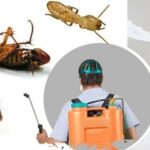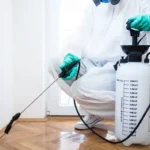Flying ants can be a nuisance and a potential threat to your home. These ants, often referred to as “ants with wings,” appear during their mating season and may invade your property. If left unchecked, they can cause structural damage, especially if carpenter ants are involved. In this detailed guide, we’ll help you identify flying ants, understand their behaviour, and implement effective strategies to get rid of them.
What Are Flying Ants?
Flying ants are the reproductive members of an ant colony, including fertile male and female ants. Their primary purpose is to leave the nest, mate, and establish new colonies. These winged ants swarm in large numbers during the mating season, which typically occurs on warm, humid days in the summer.
Key Characteristics of Flying Ants:
- Winged appearance, typically only in fertile males and females.
- Larger in size compared to worker ants.
- Often seen in swarms during mating flights.
- This may include carpenter ants, which can damage wooden structures.
What is “Flying Ants Day”?
“Flying Ants Day” is an informal term used to describe the mass swarming of flying ants during their mating period. This phenomenon occurs when weather conditions, such as high humidity and warm temperatures, create the ideal environment for mating. While the specific date varies, it usually happens in the summer months.
Key Facts About Flying Ants Day:
- Swarms can last for several days.
- Male ants die shortly after mating.
- Dead ants may accumulate around homes, especially near windows and doors.
- Flying ants are more active in areas with high humidity and warm climates.
Signs of a Flying Ant Infestation
Flying ants are more than just a seasonal nuisance. They may indicate a larger ant infestation, particularly if carpenter ants are present. Here are the most common signs:
- Winged Ants Indoors: Spotting flying ants near windows, doors, or light sources.
- Damaged Wood: Carpenter ants may burrow into timber, causing structural damage.
- Swarms Near Entry Points: Flying ants enter through cracks or gaps in your home.
- Dead Ants: Accumulation of dead ants after the mating season.
Why Are Flying Ants a Problem?
Flying ants, especially carpenter ants, can cause significant problems for homeowners. While not all flying ants are destructive, carpenter ants with wings pose a threat to wooden structures. Additionally, their presence can be overwhelming and unsanitary.
Potential Issues:
- Structural Damage: Carpenter ants hollow out wood to create nests.
- Hygiene Concerns: Dead ants and swarms can be unhygienic.
- Allergies: Some individuals may experience allergic reactions to ant bites or contact.
How to Prevent Flying Ants from Entering Your Home
Prevention is the first step in managing a flying ant problem. By reducing their entry points and creating barriers, you can minimise the chances of an infestation.
- Seal Entry Points: Use caulk to seal cracks and gaps around windows, doors, and foundations.
- Install Fly Screens: Add fly screens to windows and doors to prevent flying ants from entering.
- Keep Food Sealed: Store food in airtight containers to avoid attracting ants.
- Maintain Cleanliness: Regularly clean surfaces and floors to eliminate ant trails.
How to Get Rid of Flying Ants
If flying ants have already invaded your home, follow these steps to eliminate them effectively:
- Locate the Source: Identify the nest or entry point. Check wooden structures for carpenter ant activity.
- Use DIY Methods:
- Vacuum: Use a vacuum cleaner to remove flying ants.
- Soap and Water: Spray a mixture of soap and water to kill flying ants on contact.
- Ant Baits: Place ant baits near entry points to target the colony.
- Apply Natural Remedies:
- Lemon Juice: Spray lemon juice around entry points to repel ants.
- Peppermint Oil: Peppermint oil is a natural deterrent.
- Hire Professional Pest Control:
- If the infestation persists, contact a professional pest control service.
- Experts can identify the species and implement targeted solutions.
Professional Control for Flying Ants
For severe infestations or if you suspect carpenter ants, professional pest control services are the best solution. Experts can assess the situation and provide effective treatments tailored to your needs.
Benefits of Professional Pest Control:
- Accurate identification of ant species.
- Long-term solutions to prevent recurrence.
- Safe and effective extermination methods.
If you’re dealing with a flying ant infestation, don’t hesitate to contact Raptor Pest Control at +353 87 121 6058 for expert advice and services.
FAQs About Flying Ants
Q: Are flying ants dangerous?
A: While flying ants don’t bite or sting in most cases, carpenter ants can damage wooden structures, making them a potential threat to your home.
Q: How long do flying ants live?
A: Male flying ants typically die within a few days of mating, while female ants may live longer as they establish new colonies.
Q: Can I prevent Flying Ants Day?
A: While you can’t prevent Flying Ants Day, sealing entry points and using fly screens can minimise their impact on your home.
Conclusion
Flying ants can be a significant problem, especially if they include carpenter ants that damage wooden structures. Identifying, preventing, and eliminating these winged pests requires a combination of DIY methods and professional expertise. By taking the right steps, you can protect your home and ensure a pest-free environment.
For reliable pest control services, contact Raptor Pest Control at +353 87 121 6058. Let us help you keep your home safe and pest-free!




